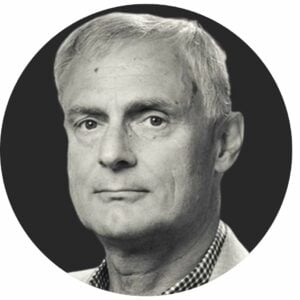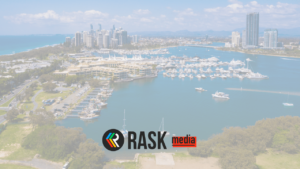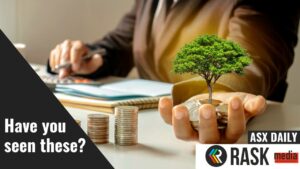In recent years, it would seem there can’t be an investment opportunity without an acronym. Sometimes, I think it’s more than a bit of alphabetical fun.
Hybrids kicked it off
The hybrid securities world first got into the acronym craze, such that investors saw listed on the ASX such interesting offers as Sydney Airport’s SKIES (Sydney Kingsford Smith Interest-Earning Securities), formerly listed builder Multiplex’s SITES (Step-up Income-distributing Trust-issued Exchangeable Securities), Seven Group Holdings’ TELYs (Transferable Extendable Listed Yield Shares) and Ramsay Health Care’s CARES (Convertible Adjustable Rate Equity Securities), in seemingly ever-more-tenuous links to the companies’ businesses.
It got to the point where ASX had to pronounce on what was acceptable in an acronym, issuing Listing Rules Guidance Note 34 on naming conventions for debt and hybrid securities, outlining what was necessary for the acronym itself not to be misleading.
It would not have been surprising if the Australian government had renamed its borrowing securities Basic Ordinary National Debt Securities, or BONDS.
FAANG & WAAAX
More recently, it is shares that have caught acronym fever, with the US market’s famous FAANG (Facebook, Apple, Amazon, Netflix and Google, now Alphabet) group of tech darlings emulated by the Australian market’s WAAAX cohort of tech stars, comprising WiseTech Global, Afterpay, Altium, Appen and Xero).
The acronyms are convenient groupings, but in the case of both FAANG and WAAAX they capture the fact that any investor wanting to achieve growth has to have a substantial long-term exposure to technology, especially tech stocks that have global promise and global reach. Investors have to think in terms of total return, and the growth that these stocks can achieve by reinvesting their earnings needs to be in wealth creation portfolios.
Eventually, the themes captured by the catchy acronyms become investable through exchange-traded funds (ETFs). The FAANG stocks are cornerstones of ETF Securities’ FANG+ ETF (ASX: FANG), which tracks the performance of the New York Stock Exchange’s FANG+ Index, and the WAAAX stocks are all top ten holdings of the BetaShares ATEC ETF (ASX: ATEC), established to track the performance of the new S&P/ASX All Technology Index. Creating ETFs around these indices allows easy and cheap exposure to diversified tech portfolios, that pick up on the powerful economic drivers that the acronyms represent.
I enjoyed it when Rupal Bhansali, chief stock picker for the US$19 billion fund Ariel Investments, was in Australia in February and came up with her own acronym: she told the Financial Review that her portfolio emphasised MANG (Michelin, telecom billing software company Amdocs, Nokia and biotech Gilead) over FAANG.
BRICs
Investment bank Goldman Sachs – which has acronym form, having introduced the world to the BRICs (Brazil, Russia, India, China) group of emerging-market powerhouses in 2001, a group that later became BRICS when South Africa was included in 2010 – recently introduced the world to the GRANOLAS, a group of 11 heavyweight global stocks from Europe.
The common thread in the group is that they are among the largest stocks in Europe, they have global reach in the healthcare, consumer basics and technology sectors, and they have huge businesses and strong balance sheets that enable them to generate earnings growth and sustainable, steady dividend flows; and they generally trade with low volatility. As such, they should be able to remain attractive to growth-starved investors.
In this case, Goldman Sachs is not having anyone on – it is not the fact that they are simply members of the catchy acronym, but the similarities in strengths, that give the GRANOLAS their substance.
GRANOLAS
These are not untested small-caps. Using analysts’ consensus estimates collated by MarketScreener, here’s a look at the GRANOLAS:
- GSK (GlaxoSmithKline), the British pharma giant, is valued at US$107.8 billion ($166 billion). Current price: GBP 16.71. Analysts’ consensus target price: GBP 18.79.
- Roche, the Swiss pharmaceuticals and device giant, is valued at US$238.4 billion ($367 billion). Current price: CHF 341.25. Analysts’ consensus target price: CHF 370.49.
- ASML, the Dutch supplier to the world’s semi-conductor industry, is valued at US$127.5 billion ($196 billion). Current price: EUR 281.80. Analysts’ consensus target price: EUR 289.46.
- Swiss-based Nestlé, the world’s biggest food company, is valued at US$298.9 billion ($460 billion). Current price: CHF 105.00. Analysts’ consensus target price: CHF 108.63.
- Swiss-based global healthcare company Novartis is valued at US$224.8 billion ($346 billion). Current price: CHF 82.69. Analysts’ consensus target price: CHF 100.46.
- Novo Nordisk, the big Danish pharmaceutical firm, is valued at US$117.3 billion ($180 billion). Current price: DKK 432.00. Analysts’ consensus target price: DKK 425.88.
- French cosmetics and personal care giant L’Oréal is valued at US$142 billion ($218 billion). Current price: EUR 255.00. Analysts’ consensus target price: EUR 240.70.
- French luxury goods conglomerate LVMH is valued at US$197.2 billion ($296 billion). Current price: EUR 356.52. Analysts’ consensus target price: EUR 391.10.
- British-Swedish big pharma AstraZeneca is valued at US$138.7 billion ($213 billion). Current price: GBP 85.59. Analysts’ consensus target price: GBP 107.18.
- French pharma heavyweight Sanofi is valued at US$124.3 billion ($191 billion). Current price: EUR 89.57. Analysts’ consensus target price: EUR 103.30.
- German enterprise resource planning software giant SAP is valued at US$128 billion ($197 billion). Current price: EUR 108.05. Analysts’ consensus target price: EUR 121.78.
“In the US, tech is still likely to remain the long-term winner,” Goldman Sachs strategists said in the research note that introduced the GRANOLAS. “In Europe, it’s more likely to be a combination of structurally strong and/or stable sectors: healthcare, consumer staples and tech.”
Goldman Sachs points out that in 2010 a cluster of oil, banks and telecom companies were still among the largest in Europe’s Stoxx 600 index. Ten years later, however, the GRANOLAS dominate the market, with their collective market capitalisation accounting for 24% of the index. “This shift was a function of the lower interest rate environment and higher risk aversion that have characterised the post-global financial crisis world,” says Goldman Sachs.
There’s no doubt it is a very sound group – now, who will be the first issuer to create the dedicated ETF?
This article by James Dunn first appeared in The Inside Investor.
[ls_content_block id=”14947″ para=”paragraphs”]




